With ice fishing becoming more and more popular, there are lots of options on the market right now to choose from. How do you know which one you really need? With ice fishing, since you don’t fish on a boat, you don’t really need a fish finder that mounts to one. For the most part, the portable fish finders are more than acceptable to use however there are specific fish finders made for ice fishing. In this post we will review some of the top ice fishing fish finders/ice fishing flasher/sonar unit(s), and provide you with information on where to purchase them.
| Marcum MX-7GPSLI | Marcum LX-7 | Vexilar FLX-20 | Marcum LX-6s | Vexilar FLX-28 |
|---|---|---|---|---|
Editors Choice
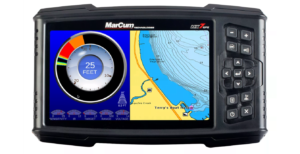 |
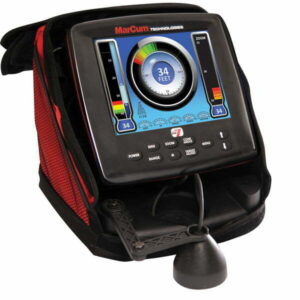 |
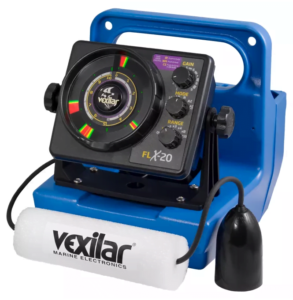 |
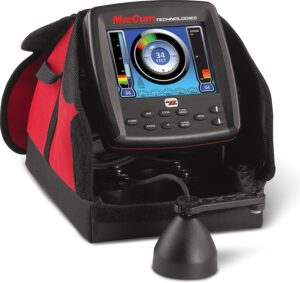 |
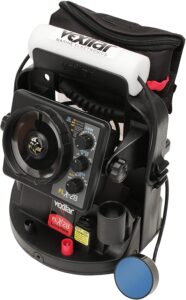 |
| Frequency: 200 khz | Frequency: 50/200 kHz | Frequency: 200 kHz | Frequency: 50/200 kHz | Frequency: 200 kHz |
| Transducer: Dual Beam 8/20 Degree Ice Transducer | Transducer: LX-Series Dual Beam 8/20 Degree Ice | Transducer: 12°, 19°, Pro-View | Transducer: LX-Series Dual Beam 8/20 Degree Ice Transducer | Transducer: Pro-View |
| Screen: LCD | Screen: LCD | Screen: N/A | Screen: LCD | Screen: N/A |
| Screen Size: 7" | Screen Size: 8" | Screen Size: N/A | Screen Size: 6" | Screen Size: N/A |
| Resolution: 800 x 480 pixels | Resolution: 800x400 pixel | Resolution: N/A | Resolution: 640x480 pixels | Resolution: N/A |
| GPS: Internal, High Precision | GPS: N/A | GPS: N/A | GPS: N/A | GPS: N/A |
| Maps Included: Navionics® Basemap | Maps Included: N/A | Maps Included: N/A | Maps Included: N/A | Maps Included: N/A |
| Memory Card Slots: Micro SD | Memory Card Slots: N/A | Memory Card Slots: N/A | Memory Card Slots: N/A | Memory Card Slots: N/A |
| Backlit: N/A | Backlit: Yes | Backlit: N/A | Backlit: Yes | Backlit: N/A |
| Best Price (Amazon) Best Price (Bass Pro) | Best Price (Amazon) Best Price (Bass Pro) | Best Price (Amazon) Best Price (Bass Pro) | Best Price (Bass Pro) | Best Price (Amazon) Best Price (Bass Pro) |
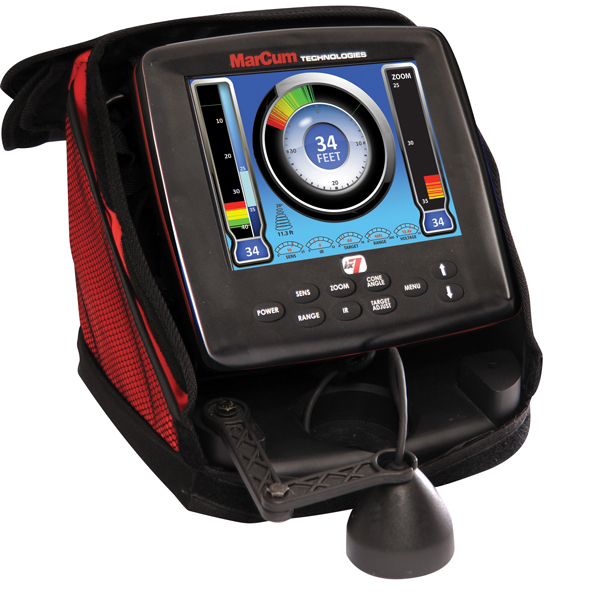
Looking for the best ice fishing fish finder? Here is a breakdown:
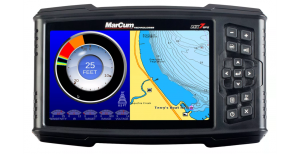
Key Features:
Pros:
Cons:
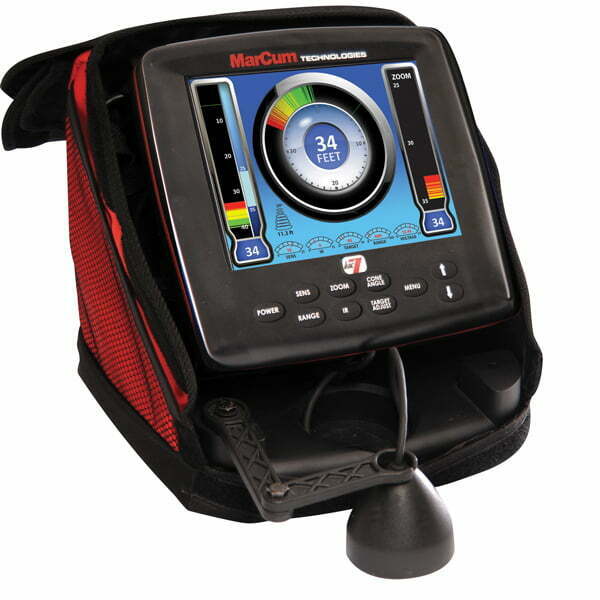
Key Features:
Pros:
Cons:

Key Features:
Pros:
Cons:
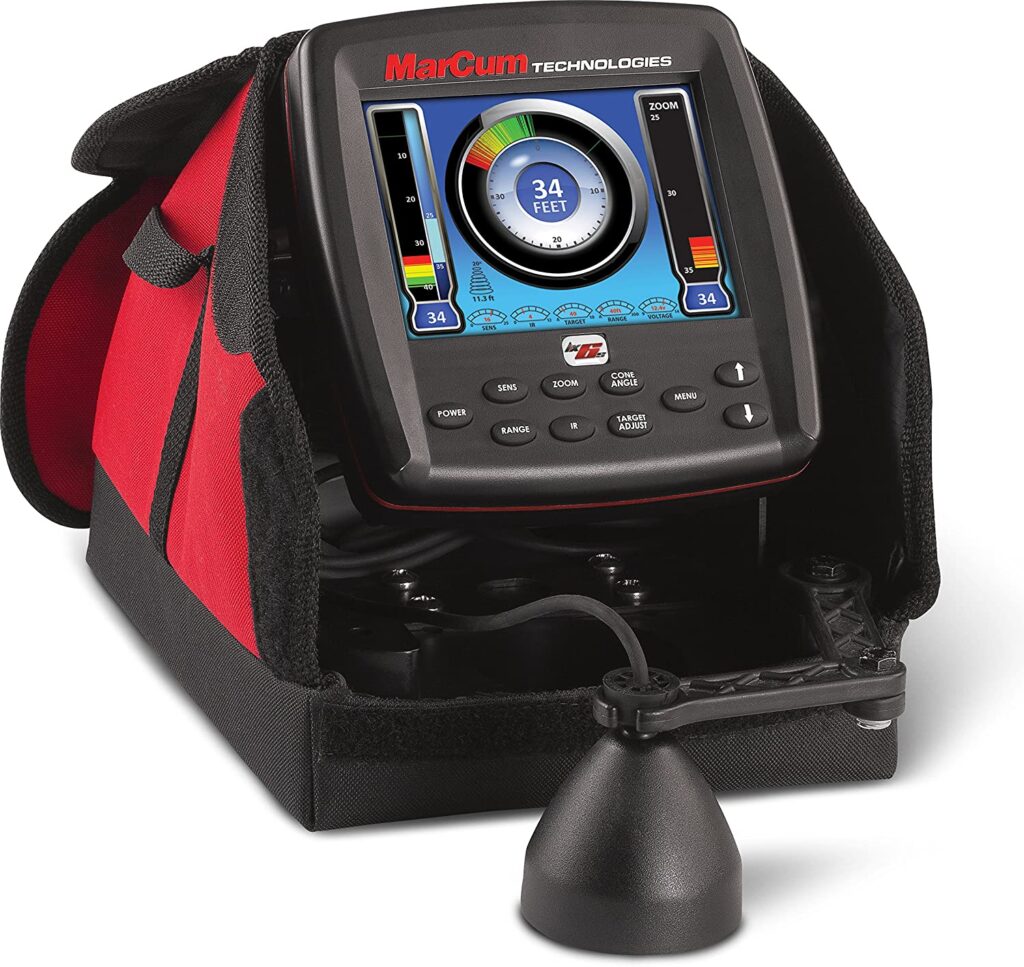
Key Features:
Pros:
Cons:
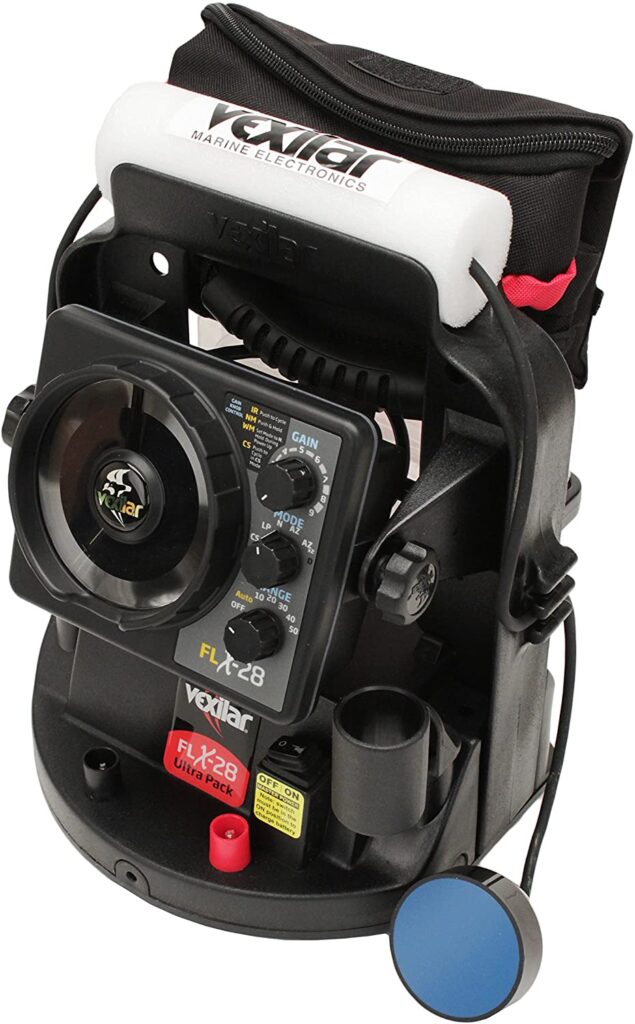
Key Features:
Pros:
Cons:
The display is like your window into the watery world below. You want a screen big enough to read at a glance, with crisp resolution that doesn’t look like an old-school video game when showing fish and structure. And since you’ll be out in the glare of the sun reflecting off the ice, or in the dim light of early dawn, getting a finder with a screen that's readable in all lighting conditions is a big plus.
Sonar is the bread and butter of any fish finder. You've got options like CHIRP, which sends out a continuous sweep of frequencies for better detail, or dual-frequency, which is great for showing you the difference between a school of minnows or the lunker you’re after. It's about getting that clear picture of what's beneath you, so you’re not just drilling holes willy-nilly.
Out on the ice, you need gear that can withstand the cold and won’t have a meltdown if it takes a little tumble. Look for a finder that's compact, easy to lug around, and won't crack under the weight of your boot if you accidentally step on it.
Cold weather is the arch-nemesis of battery life. Look for a fish finder with a battery that can handle the cold and won’t bail on you quicker than your buddy who forgot his thermal socks.
Having built-in GPS and mapping features is like having a treasure map where ‘X’ marks the hotspot. It's perfect for marking those spots where you hit the jackpot so that you can find your way back or share it with a pal (or not!).
The transducer on your fish finder is like the probe droid the Empire sent down to Hoth – it's what scouts out the fish. Understanding the differences between transducer types, like cone angles and frequencies, ensures you're getting the most accurate reading of the underwater landscape.
Nobody wants to fiddle with a million buttons with gloves on. A finder with a user-friendly interface will save you from frosty frustrations.
It's all about the setup. Make sure your fish finder plays nice with your other ice fishing kit, so you can focus on the fish, not fumbling with gear.
Prices for fish finders can range from “my first fish finder” to “I might need to take out a second mortgage.” Spend within your means, and remember that the most expensive option isn't always the best for your specific situation. It's about finding that sweet spot where cost, quality, and features intersect.
So, unwrap that thermal blanket, pour yourself a steamy cup of joe and start sifting through fish finders with these tips in your tackle box. Remember, the right fish finder won’t just help you catch more fish; it’ll make your whole ice fishing experience more successful and enjoyable. Tight lines and clear displays, my friends!
Take the Vexilar FLX28, for example. Traditional ice fishing flashers offer a straightforward circular display, lighting up in colors like red, yellow, and green, which signal various aspects underwater. Red typically denotes the lake's bottom or indicates fish depth, while green tends to highlight weed presence or other cover. These devices are valued for their ease of use and have a loyal following among anglers due to their reliability and straightforward performance. Even without the bells and whistles of newer technologies, flashers have stood the test of time as effective fish-finding tools.
Ideal for anglers seeking a no-frills visual of what's below the ice without extra features like GPS.
On the flip side, digital locators such as the Humminbird Helix 10 possess a sizable LCD offering a multifaceted view akin to standard boat-mounted fish finders. Suitable for both open water and ice fishing use, they show a detailed representation of the sonar returns, often complete with a flasher mode for fans of the familiar display. They earn their stripes by incorporating GPS and mapping capabilities, allowing you to chart lake layouts, mark favorite spots, and expertly navigate uncharted waters. Though they're on the pricier end of the spectrum, digital locators win over tech-savvy anglers thanks to their sophisticated functionalities and customization.
These are excellent for those who prioritize detailed displays, require automatic depth tracking, and value GPS maps for navigating new or lesser-known fishing grounds.
Summing it up, modern locator technology certainly makes ice fishing more efficient, but if GPS and mapping don't hook your interest, a traditional ice fishing flasher could serve you just fine – helping you peer into the watery depths and hopefully, leading to a more fruitful ice fishing expedition!
Imagine a flasher's display marked with icons for a lure, a fish, and the lakebed. Flashers use color-coded signals to represent the strength of sonar echoes. Typically, green signifies weaker echoes from softer objects like vegetation, yellow indicates medium-strength echoes, possibly from fish or smaller objects, and red represents strong echoes from hard surfaces, usually the lakebed.
The intensity of the sonar return tells you about the sonar's encounter underwater and how much of the signal was reflected back to the unit. For instance, when the sonar wave meets vegetation, it doesn't bounce back entirely, yielding a green signal. Conversely, when it hits the lakebed, the signal returns in full force, creating a red display.
To gauge the water's depth, watch for a continuous red band. This band might be interspersed with green or yellow if the bottom is somewhat soft. If there's no distinct red band, you might need to modify your sonar's range by utilizing the associated control.

By tweaking the gain, or sensitivity, you control the redness of objects on the display, making it easier to differentiate between various underwater elements. Increasing the gain will show more items as red, while decreasing it results in fainter signals. Briefly playing with the gain can help you better spot fish amidst the underwater terrain.
It's worth mentioning that flashers may present data differently across brands and models, so it's essential to refer to your specific unit's user manual. This guide not only helps with accurate interpretation but also often provides manufacturer's tips to maximize your flasher's performance.
Absolutely, many modern ice fish finders are designed for year-round use. Convertible models come with an ice fishing mode and a traditional open-water mode, along with appropriate accessories (like transducers and mounts) that make the switch between seasons a breeze.
Flasher Pros: Real-time response, simplicity, durability, typically has a longer battery life, and may be more dependable in extremely cold conditions.
Flasher Cons: Less detailed information, no GPS or mapping capabilities, and a less intuitive display for new anglers.
Digital Sonar Pros: Advanced features, GPS and mapping capabilities, detailed displays with history, adaptable for various fishing types, and often customizable.
Digital Sonar Cons: Generally more expensive, could have a steeper learning curve, and may require more power.
To keep your ice fish finder in good shape, always clean it after use, protect it from extreme temperatures when not in use, and store it in a dry place. Remove the batteries to prevent corrosion, and consider a protective case to shield it from accidental drops or scratches.
The latest advancements include better battery performance in cold weather, higher screen resolutions, and improved sonar technology like CHIRP for clearer imaging. Also on the rise are mobile integration and Wi-Fi connectivity for seamless updates and data sharing.
Screen quality matters a lot, especially for clarity in direct sunlight or low-light situations. Look for a high-resolution screen with good contrast and backlighting. A screen with anti-glare properties and a size that suits your eyesight and preferences is also crucial.
Yes, multi-purpose fish finders are available that can be used for various fishing styles. These units come with different modes and transducers suitable for kayak, shore, and boat fishing, among others.
Ice thickness and clarity can impact sonar performance. Thick ice, particularly if it's bubbled or has layers of slush, can absorb or scatter the sonar signal, reducing your unit's effectiveness. For best results, ensure your transducer is placed in firm contact with clear, solid ice.
Always check the ice thickness manually before setting up. Use a floatation device and carry rescue spikes. Make sure to secure the transducer and fish finder cables so they don't become a tripping hazard, which could cause injury or damage the unit.
Yes, beginner-friendly fish finders are available, often featuring simplified controls, intuitive displays, and basic sonar capabilities that cater to those who are new to the sport or who prefer a straightforward approach to ice fishing. We recommend the Vexilar FLX-20 because of it's user-friendly interface.
There are many advantages to a ice fishing fish finder.
At FishFinderTech.com, our commitment to accuracy and authenticity is as deep as the waters we explore. Our mission is to guide anglers through the vast ocean of fishing technology with honest, in-depth reviews and state-of-the-art advice. The world of sonar equipment and navigational tools can be as complex as the ecosystems beneath our boats, but our team of seasoned experts makes it accessible and easy to understand.
Our editorial team consists of passionate anglers, marine enthusiasts, and tech-savvy writers who not only have first-hand experience with the nuances of fishing technology but bring a journalist's eye for detail and a zeal for research. We dive deep into each product, scrutinizing specifications, and putting gear through rigorous field tests to ensure we recommend only the most reliable and effective equipment.
We're constantly casting lines for new information, interviewing product designers, engineers, and fishing professionals who share insights into the practical application and engineering behind the gear. This allows us to provide our readers with a comprehensive understanding of product features, performance, and value.
FishFinderTech.com operates with complete editorial independence. Our reviews are unaffected by advertising; our focus is solely on providing transparent evaluations and sharing the pros and cons of each product. We're committed to helping our community make informed decisions, whether they're seasoned anglers or new to the sport, ensuring that every purchase is a step towards an enhanced fishing experience.
In navigating the currents of the latest fishing gear and innovations, you can trust FishFinderTech.com to be your compass, steering you towards the tools that will enrich your time on the water and potentially yield the best catches of your life.
We hope that these reviews will be a valuable resource in choosing the best device for you and help you choose a fish finder you need. Whether you’re going to be casting off from the shore, into holes in the ice, or using a kayak, these units will prove useful.
There are many models available with affordable price tags. They are all easy to use but have distinct drawbacks and advantages. That’s why you should choose the one that best suits your needs. If you’re more comfortable with buying and using a portable sonar fish finder after reading our articles, then we have been successful.